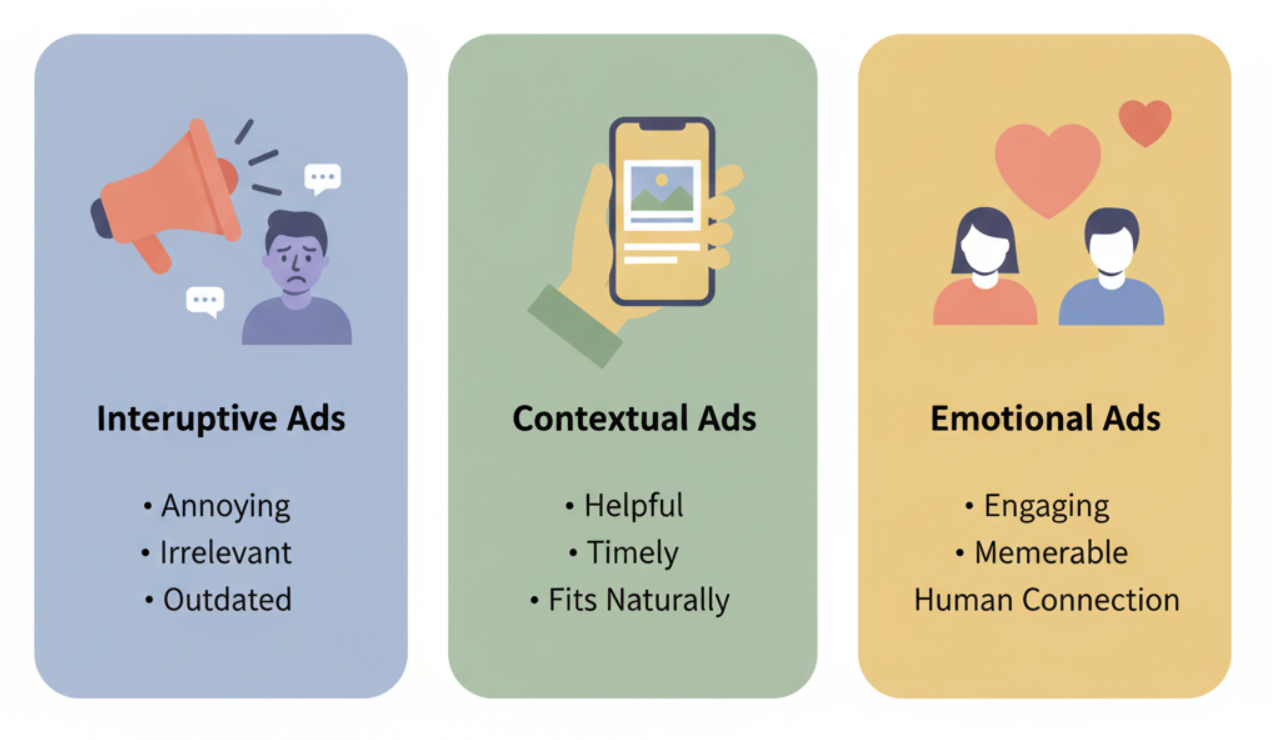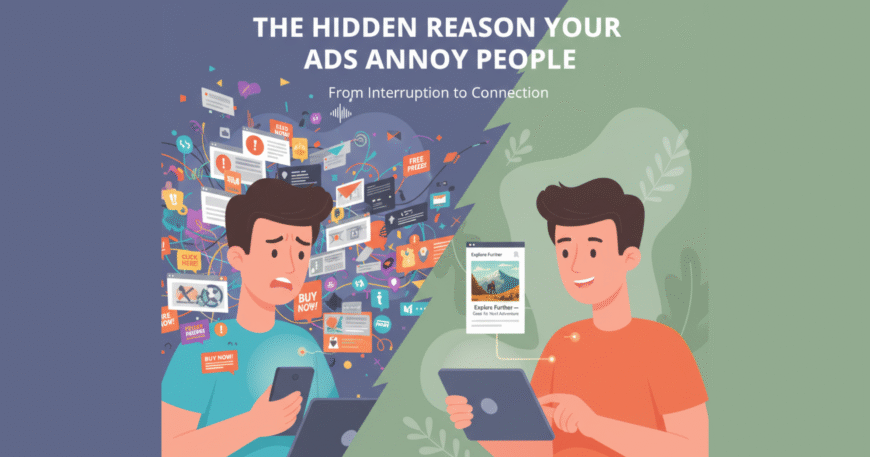Table of Contents
- Why Interruption-Style Marketing Feels Outdated
- The Shift to Contextual Relevance
- The Power of Emotional Connection
- Attention vs. Intention: Why Timing Matters
- Personalization Without Creepiness
- The Future of Ads: From Disruption to Connection
Advertising is everywhere. From the moment you unlock your phone to the instant you switch on a video, an ad tries to grab your attention. But here’s the problem: most people don’t want to be interrupted anymore. The hidden reason your ads annoy people isn’t just frequency or repetition—it’s the outdated belief that interruption equals attention.
Why Interruption-Style Marketing Feels Outdated
In the early days of TV and radio, interrupting the viewer worked because people had fewer choices. A commercial break was tolerated. Today, audiences are in control. They can skip, block, scroll past, or mute anything that feels intrusive. Interruption now signals disrespect for their time, creating frustration rather than engagement.
When brands still cling to this old-school approach, their ads come across as noise rather than value. This is why your campaign, no matter how clever, risks being ignored—or worse, resented.
The Shift to Contextual Relevance
What audiences actually want is advertising that fits into their current environment and needs. Context matters. A skincare ad shown after someone has just watched a “morning routine” video feels helpful. The same ad forced in the middle of a serious news clip feels irrelevant.
Contextual ads align with what the person is already doing, consuming, or searching for. Instead of breaking their flow, you become part of it. This simple shift transforms an ad from an annoyance into a suggestion.
The Power of Emotional Connection
Beyond context, emotion is what makes ads resonate. People don’t remember products; they remember how a message made them feel. An ad that inspires, entertains, or empathizes creates a bond. Emotional advertising shifts the focus from “look at us” to “we understand you.”
When ads reflect genuine human experiences—joy, struggle, hope—they no longer feel like marketing. They feel like stories worth listening to.

Attention vs. Intention: Why Timing Matters
Not every moment is the right moment for an ad. A perfectly crafted campaign can still fail if it reaches people when they aren’t ready to listen. This is where intention plays a role. Ads that anticipate where someone is in their journey—whether they’re just exploring options or ready to buy—are far more effective than blanket campaigns. Timing aligned with intent reduces friction and increases relevance.
Personalization Without Creepiness
Personalization has become a buzzword, but it often crosses the line into feeling invasive. No one likes the eerie sense that an ad is following them around the internet. The key is useful personalization: tailoring ads based on expressed interests, not secret surveillance. When personalization feels like service—“Here’s something that might genuinely help you”—people engage instead of rolling their eyes.
The Future of Ads: From Disruption to Connection
The hidden reason your ads annoy people isn’t about the medium, the budget, or even the design—it’s the mindset. Interrupting is easy, connecting is harder. But in today’s world, connection is what cuts through the noise.
Brands that embrace contextual relevance, emotional resonance, and respectful personalization will no longer be seen as intruders. They’ll be welcomed as part of the experience.




